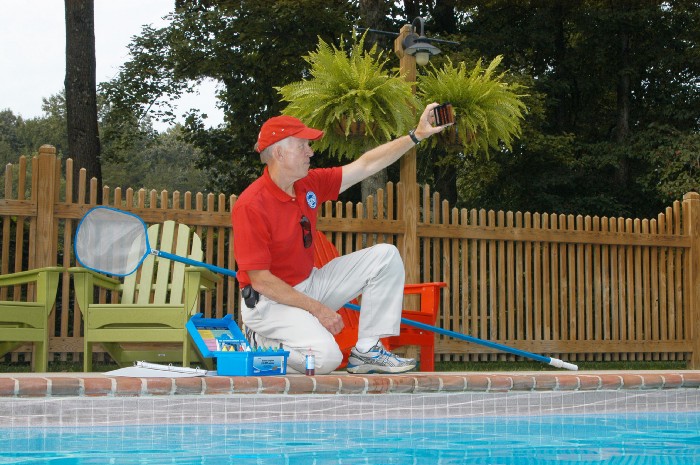Why Am I Getting Unusual Test Results?

Summer is here, and while temperatures are ramping up, so is business for pool/spa retailers and service technicians. This means lots of water testing and then making recommendations for chemical additions based on those results.
Things can get pretty tricky though when you perform a test and then get results you are not expecting. Take for example a DPD chlorine test where no color develops. You know chlorine has been added to the water, possibly a lot, so what’s going on? Is there really no chlorine in the water, or do you have bad reagents? This is a common situation and one we receive the most calls about. The culprit is probably not the reagents (especially if they worked correctly in the last test), but it actually may be that too much chlorine is in the water. How can you tell? If you add DPD indicator to the sample water (after adding the required buffer), and you see a flash of pink before the sample goes back to colorless, that is a good indication there is chlorine in the water — probably a high amount. The high chlorine level is bleaching out the DPD indicator. Try diluting the sample (1:1) with chlorine-free water and then retesting, multiplying your results by 2 to account for the dilution. If the sample is still colorless, try putting just a small amount of sample water in the sample tube and filling it the rest of the way with chlorine-free water. Add the buffer and then the drops of DPD indicator to the sample. Did it turn pink? If so, then you have just confirmed a very high chlorine level is the culprit.
Here’s another situation where the wrong color develops — this time while performing a pH test. You have added the phenol red indicator and the sample turns a blue/purple instead of a yellow-to-red color. Could this be a reagent problem? Actually, this is another example of high levels of chlorine (usually over 10 ppm) that are causing an interference. Retest the water, this time adding one drop of the chlorine neutralizer from the alkalinity test into the sample that is in the test cell. Did this produce the expected color?
This brings me to a saying which is often appropriate: “Experience is what you get when you don’t get what you want.” Experience can be gained from personally having the problem and having to determine the resolution, or, it can be gained from talking with people who have lived through the problem. Both can be equally effective.
If you want to gain some experience about testing interferences and how to overcome them, join Wayne Ivusich, Taylor’s Director of Education, for his short 30-minute webinars. Upcoming webinar dates are available on our website, as well as previous recordings.

